Care For The Salvia Plant: Flower, Medicinal and Culinary
Salvia is a blooming, decorative garden plant that has naturalised in a variety of locations across the world. It has a long history of usage in both medicine and cooking. Salvia is derived from the Latin word’salvere,’ which means “to feel good and healthy.” There are around 900 species in the mint family, many of which are more widely known as sages and are related to Nepeta (Catmint) and Monarda (Bee Balm). Salvia officinalis, or common sage, is widely grown as a culinary herb for flavouring and seasoning meats.
Their nectar-rich blooms attract a variety of pollinators, including as honey and native bees, butterflies, and hummingbirds.
Quick Growing Guide
Botanical Name: Salvia, about 900 species
En français: Salvia
Blooms:
Sun / Shade:
Watering:
Water: A drought tolerant plant, do not overwater.
Soil:
Pollinators:
Care:
- Are Salvia's Perennials?
- How Do You Take Care Of Salvia Plants?
- When Does Salvia Bloom and Does It Flower All Summer?
- Salvia Care – Planting
- Salvia Plant Care and Maintenance
- What Pests And Diseases Attack Salvia Plants?
- Salvia Plant Types and Varieties
- The Winter-Flowering Salvias
- Video – Enjoying Salvia Plants
Are Salvia’s Perennials?
There are 3 types of Salvia:
- Herbaceous perennials which die back to the ground at the end of the year
- Woody perennials like the sage used in cooking
- Annual Salvia
All hold some similarities in how they grow and bloom along with their plant architecture.
Salvia plants are perennials and biennials. Shrubs from dainty to the tall, leggy types, vary wildly in type, form, and shape. Salvias are upstanding, very easy to grow plants making such a sight to see in landscapes.
The more popular Salvia plants, Salvia leucantha, and Salvia splendens are native to the Mediterranean, California, and Mexico. They generally thrive in dry and humid climates. In the garden, they lend a touch of vibrant hue come autumn and summer.
How Do You Take Care Of Salvia Plants?
Sage or Salvia add a vertical flair to the outdoor garden environment, as well as aromatic leaves and eye-catching blossoms.
Lighting: How Much Sun Does The Salvia Need?
Salvia plants like full sun (8-10 hours of direct sunlight) but may also thrive in moderate shade. Morning light and afternoon shade are ideal growth conditions. However, various Salvia species require somewhat different attention. They may also be resistant to cold temperatures and frost.
What Is The Best Soil And Fertilizer For Growing Salvia Plants?
Salvia plants do well in any good garden soil, and can survive low soil fertility and dryness.
Plant Salvia in spring after preparing the garden bed. Use a tiller or garden fork to loosen the soil (12” to 15” inches deep). Gradually incorporate 2 to 4 inches of rich compost. Mix in a balanced slow-release fertilizer and fertilize weekly with a water-soluble 20-20-20 liquid fertilizer.
How Much Water Does Salvia Need?
Though they are quite drought-resistant, watering yields superior results. Avoid overwatering, as too much water can rot roots.
A good rule for watering Salvia growing in the ground is to water thoroughly and apply 1” inch of water every 7-10 days. (Include both rainfall and additional supplemental irrigation) Applying water right at the soil level is easily accomplished using soaker hoses for deep watering.
Remember, Salvia plants growing in containers may dry out faster and require more frequent watering. Make sure any salvia does not sit in water.
If you find Salvias wilted in the evening after spending all day in the sun, they should recover. However, if the plants are extremely wilted, you may want to give them some water at the base of the plants and not on the leaves. Water on the leaves may scorch them. If you notice the potted plants wilted in the early morning, give the plants a supplemental watering.
When Does Salvia Bloom and Does It Flower All Summer?
Salvia blooms throughout the summer months allowing homeowners to add a wide range of color options from white, pale rose, vibrant red, purples and blue.
Flowering perennial salvia plants produce tall spikes of tiny, densely-clustered, rich in nectar flowers above deliciously-scented foliage. These plants grow anywhere from 18” inches to 5 feet tall beauties, depending on the sage variety. Aside from the remarkable foliage scent and magnificent blooms, the Salvia attracts some of the best neighborhood fauna, while deterring some of the worst.
Deer Resistant Salvia
Animals such as deer, elk, and rabbits lergely ignore Salvia. However, butterflies, bees, and hummingbirds love the tall nectar-rich flowers!
The flowers of lighter colored Salvias can burn from hot midday summer sun. The darker colored flowers appear to be more sunburn resistant. [source]
Salvia Care – Planting
The Salvia also called the “Meadow Sage” produces some of the richest royal blue flowers to elegant purple blooms, all excellent additions to mixed perennial borders, rock gardens and country-style gardens. Other colors of the meadow sage flowers include orange, white, pink, erise, and mauve all interesting garden additions.
In short, Salvia plants make the perfect plant for putting on display borders, beds and containers. Flowering profusely the plant can survive droughts and the occasional neglect. Its flowers provide joy to gardens and owners alike, requiring little maintenance or persuasion to grow during the summer months.
Carefully space plants 1 to 3 feet apart, depending on the variety. As a general rule space plants twice the diameter of the pot, the Salvia came in. Gently, remove the plant from the container and place it in the hole, with the root ball level with the ground. Pack in the soil around the root ball and firm it in, and water thoroughly.
After watering, I like to include a little liquid starter plant food for an initial boost.
Salvia Plant Care and Maintenance
Pruning Salvia
To keep Salvia compact and tidy, cut them back hard after flowering. Cutting plants down to 3”-4” inches to promote more growth and bloom.
Some varieties after shearing may potentially produce a second flowering. During mid-summer, Salvia may begin to look overgrown and tired. Rejuvenate the plant by cutting back about ⅓ of the plant to encourage more growth.
Deadhead Salvia For More Bloom
To promote more flowers deadhead spent blooms. Select a good pair of hand pruners like the Felco #2 for the job and remove the old bare bloom spikes. The typical Salvia branching is opposite each other along with a central leader. When blooms begin to wither remove the central leader and the opposite branches. This gives more room and promotes new growth and flowers.
Can Salvia Be Split or Divided?
Uproot and divide plants every few years. Early spring is the best time before new growth starts. Salvia (sage) can grow quickly and re-establish themselves when planting them in new areas. For replanting, take a sharp spade to dig carefully around the plant’s edges.
Next dig right through the middle, dividing the plant up into two clumps. Shake off the excess soil, then quickly replant the Salvia and water thoroughly.
Prune salvia plants down to its roots after the flowering season passes. Keep your Salvia sage happy. In springtime, put a thin layer of compost, and a two-inch layer of mulch to control the weeds and retain moisture.
What Pests And Diseases Attack Salvia Plants?
Salvia encounters the usual suspects in the garden. For continuous bloom, you need to protect them from these pests.
Salvia Plant Types and Varieties
Salvia ‘May Night’
The deer resistant, hardy 1997 Perennial Plant of the Year is still a best seller. Easy care, thrives in a hot sunny location, does well planted in groups. Beginning in May the beautiful violet flowers emerge and hold through the summer. After the “first bloom” cut the plant back for a second bloom. Excellent companion plant to mix with other oranges and reds.
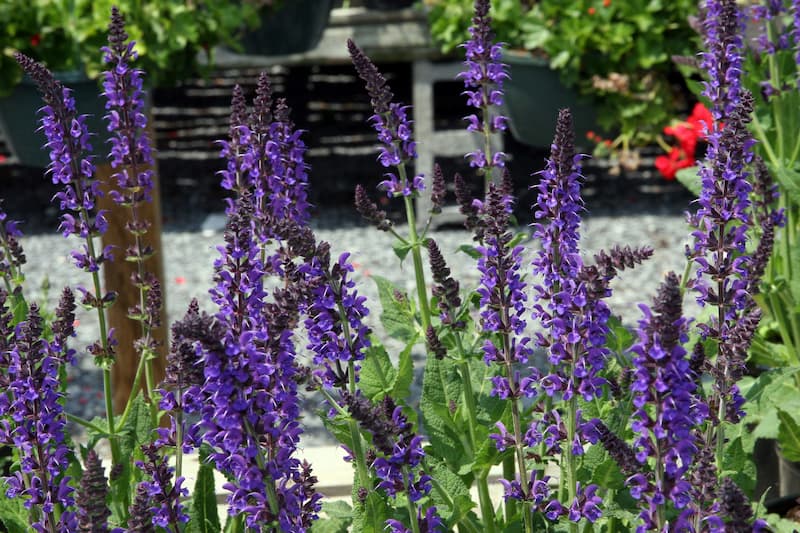
Photo by David J. Stang, CC BY-SA 4.0 https://creativecommons.org/licenses/by-sa/4.0, via Wikimedia Commons
Salvia Divinorum
Also known as sage of the diviners, grows in shady and moist locations. Salvia divinorum plant originally came as a native from the cloud forest of Sierra Mazateca, Oaxaca, Mexico. As a psychoactive plant, some claim it causes spiritual experiences and hallucinogenic encounters. Moreover, it produces mainly through vegetation and releases a few variable seeds.
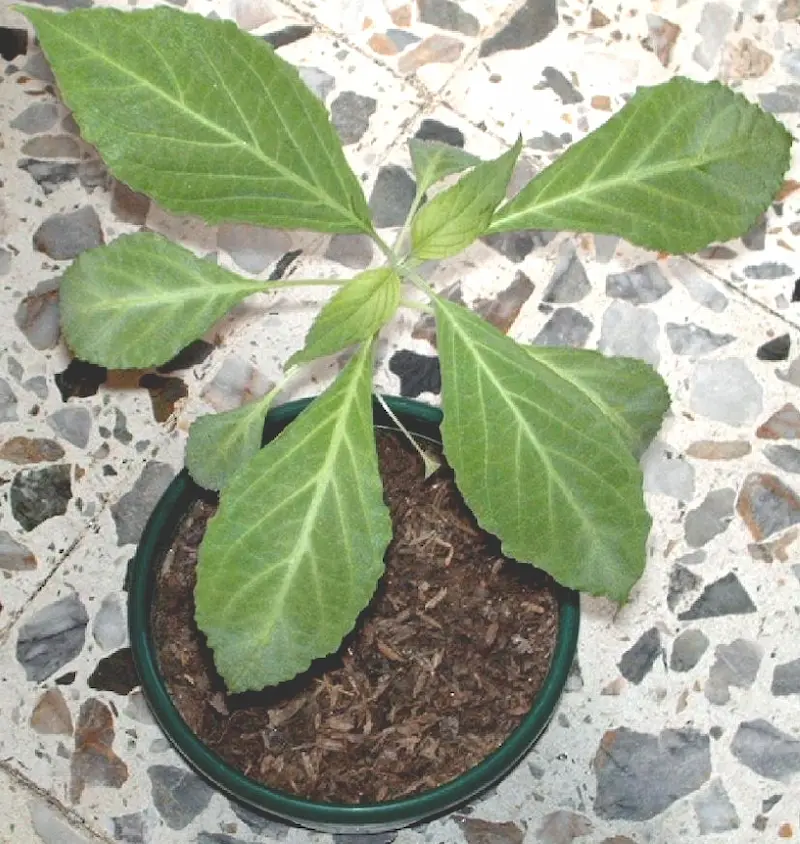
Johnamonsalve, CC BY-SA 3.0 http://creativecommons.org/licenses/by-sa/3.0/, via Wikimedia Commons
Salvia Farinacea
Known as the blue salvia, grows up to 2 feet tall. This drought-tolerant plant makes an excellent choice for containers, garden beds, and borders. This native plant from North America caught the hearts of many gardeners as it’s easy to grow and blooms all summer.
Should not be confused with the Blue Sage (Salvia azurea), an end-of-season stunner with tall spikes of lovely blue flowers.
Salvia Azurea
The Victoria blue salvia belongs to the same class, Salvia farinacea, also known as mealycup sage or mealy sage. However, this particular breed amazes everyone because of its long-lasting flowers and tolerance against partial shade. Other breeds under this class include cirrus salvia and evolution salvia.
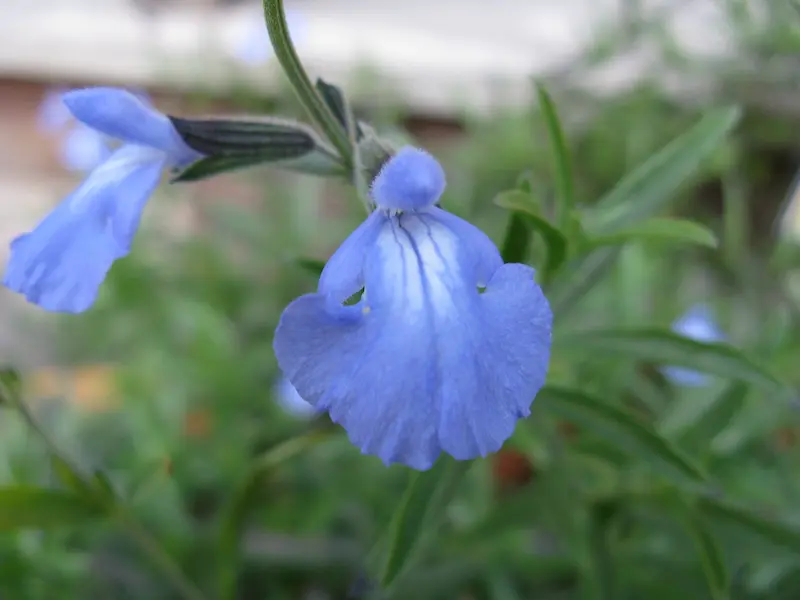
Credit: I, KENPEI, CC BY-SA 3.0 http://creativecommons.org/licenses/by-sa/3.0/, via Wikimedia Commons
Salvia Splendens
Red Salvia (Salvia splendens), also known as scarlet sage, grows more than a foot tall with hardiness zones of 10 to 11. This easy to grow plant also emits a scent from its foliage which keeps deer and rabbits away.
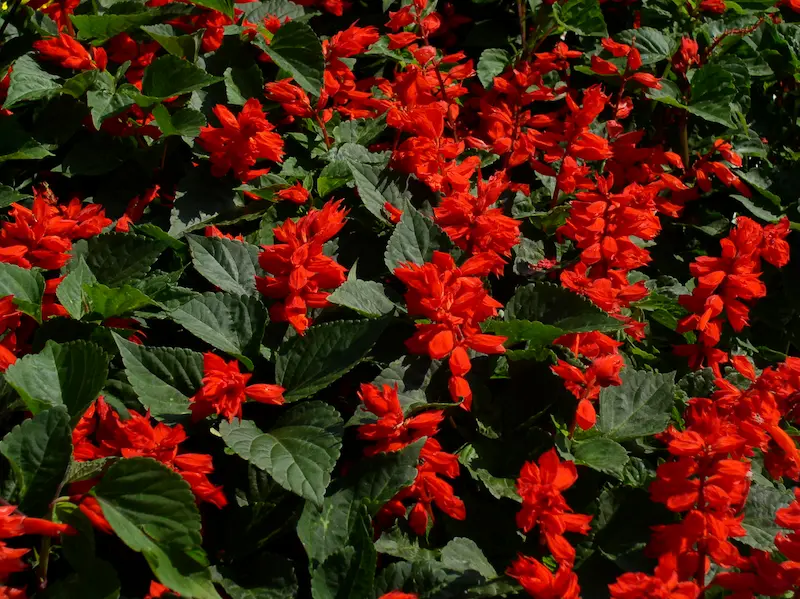
Credit Hanna Zelenko, CC BY-SA 3.0 https://creativecommons.org/licenses/by-sa/3.0, via Wikimedia Commons
Salvia Coccinea
Meanwhile, Lady in Red Salvia (Salvia coccinea) displays vibrant red spikes throughout the whole summer. Butterflies, hummingbirds, and gardeners love it because of its brilliant blooms.
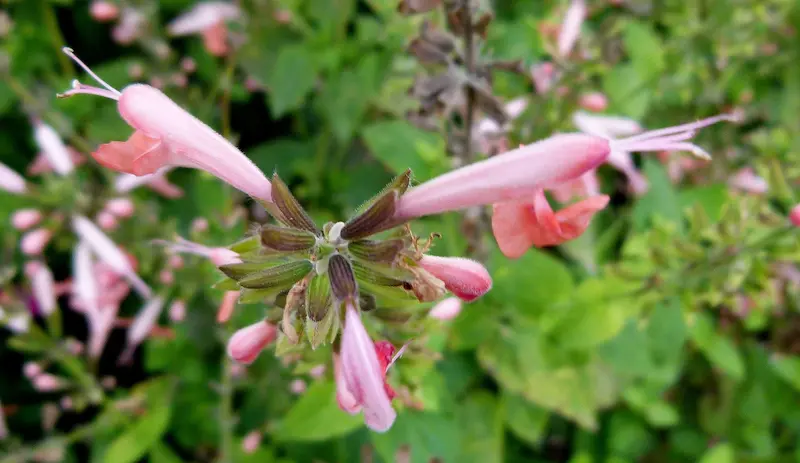
Salvia Apiana
On the other hand, the white sage (Salvia apiana) emerges in summer and grows up to three meters. Its flowers possess the sexual characteristics of both male and female making it a hermaphrodite species.
Salvia Horminum
Clary sage (Salvia horminum) produces salvia flowers with big pink, white, or purple colors. This type of sage requires a well-drained soil to live.
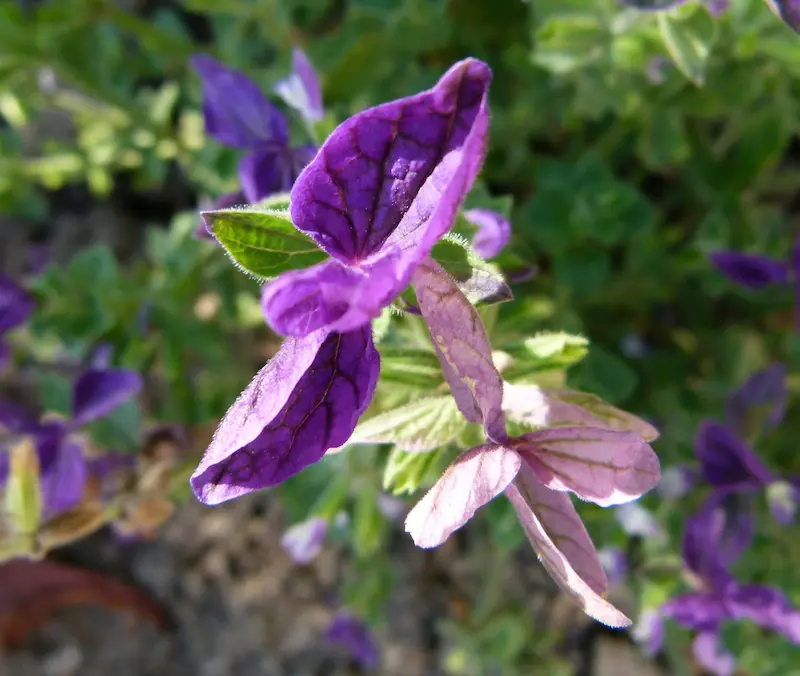
Credit: Dinkum, CC0, via Wikimedia Commons
Salvia Transylvanica
The blue cloud (Salvia transylvanica) or Transylvanian sage blooms handsome flowers of purple color alongside its lusterless-green foliage.
This salvia plant does well in sunny places and needs deadheading for repetitive flushes of blooms.
Salvia Nemerosa
Woodland sage or woodland clary (Salvia nemerosa) originally comes from Europe and Western Asia. Salvia nemerosa comes as an attractive plant anyone can easily grow and propagate.
Salvia Guaranitica
Black and blue salvia (Salvia guaranitica) displays beautiful cobalt-blue flowers coming out of its dark stems and purple-black buds. It grows up to three feet tall in cold areas while those in warm regions may reach 6 feet of height. Hummingbirds love this variety of salvia plant.
Salvia Greggii
Desert blaze (Salvia greggii), also known as autumn sage, stuns guests in shops with its clusters of red flowers lying beautifully against its white-edged foliage.
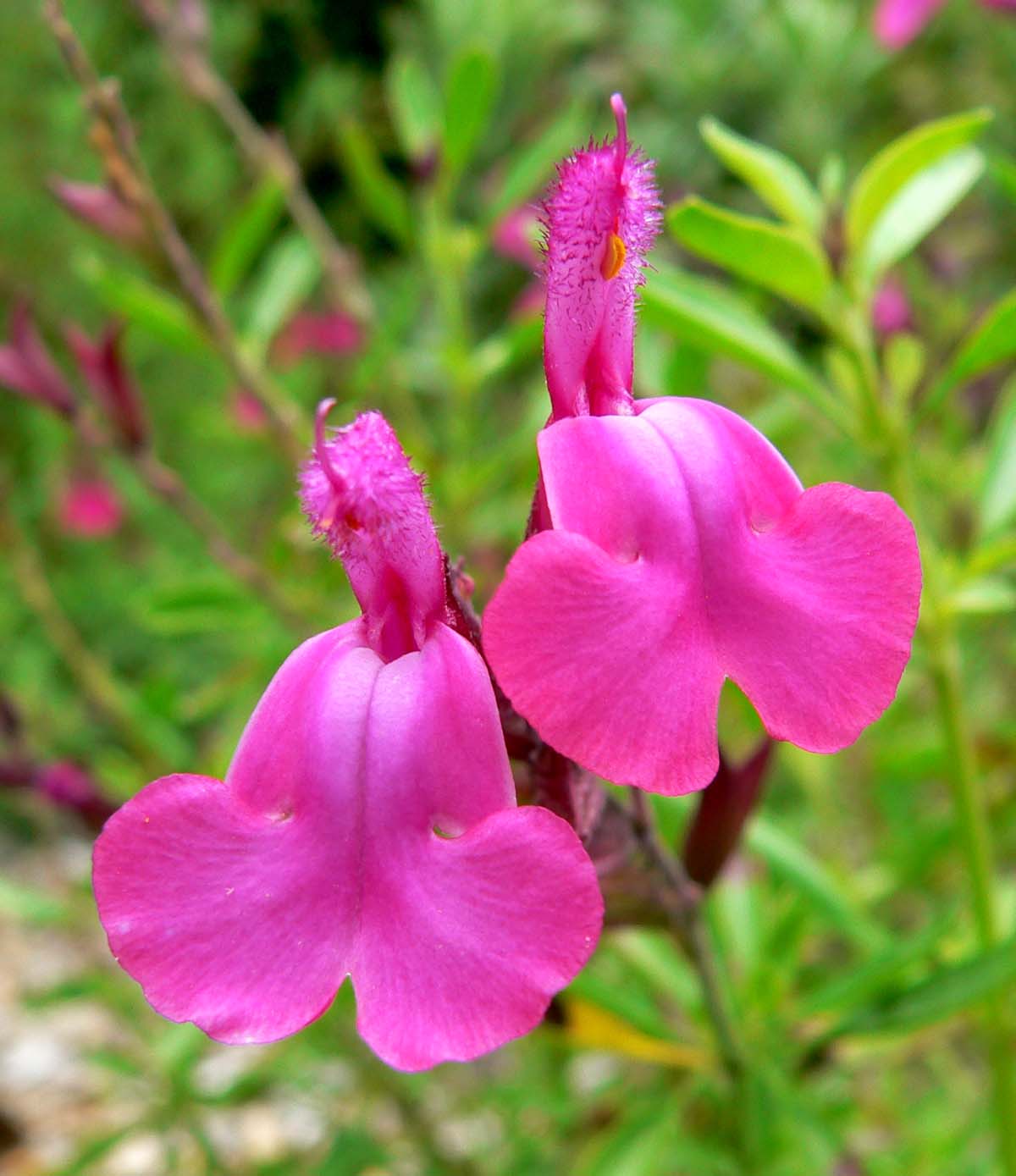
Salvia Cardiophylla
Another interesting variety of the salvia plant is Salvia cardiophylla. It blooms pale blue flowers, produces heart-shaped leaf, and grows very fast. Just make sure you provide a well-drained soil so it can thrive in your garden.
The Winter-Flowering Salvias
There’s a little known group of Salvia’s originating from the cool, mountainous areas of South and Central America. These species include:
- Salvia dorisiana
- Salvia conertiflora
- Salvia wagneriana
- Salvia guaranitica ‘Costa Rica Blue’
As such, the flowers complement to spring and winter seasons.
For these plants, the best type of environment is a moist and cool one. Shelter them from frost and hot winds by positioning them beside tall shrubs and deciduous trees. Encourage new growth by cutting old canes during late summer setting up new growth to time perfectly right from autumn to spring.







Leave a Reply
You must be logged in to post a comment.